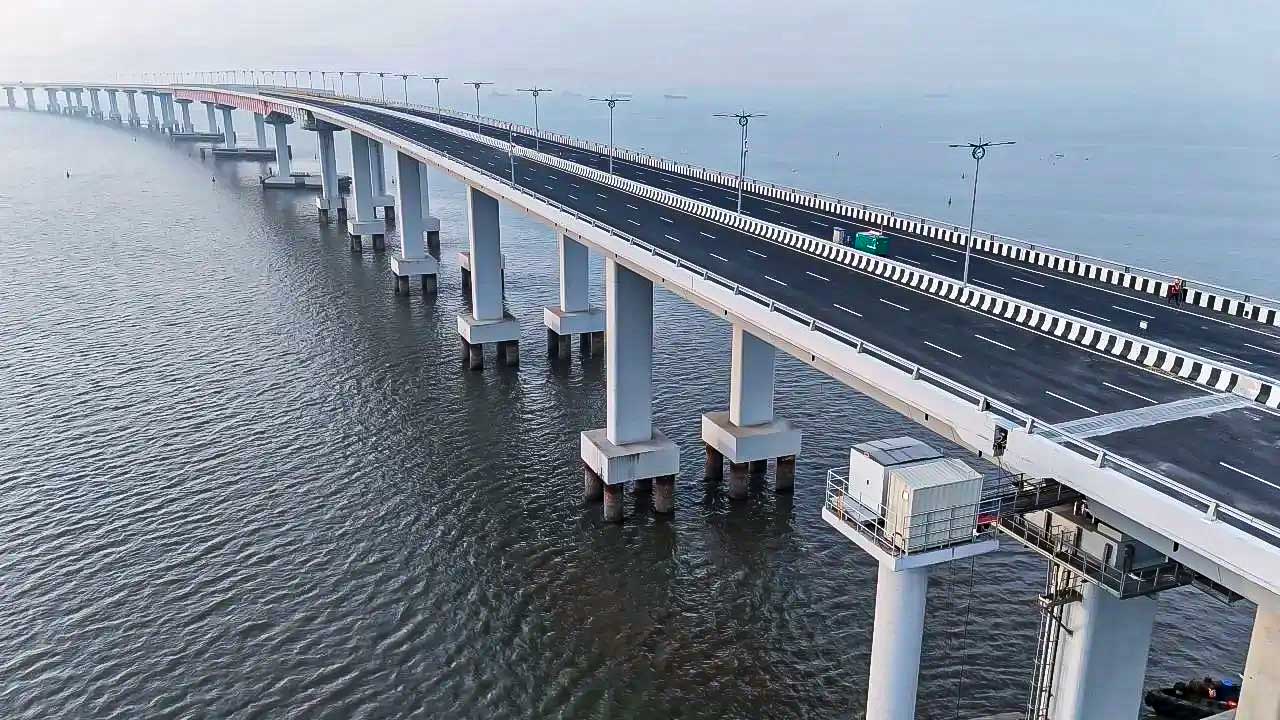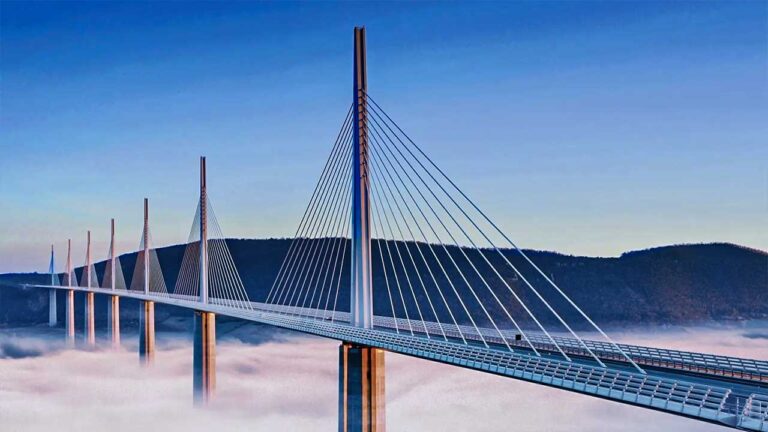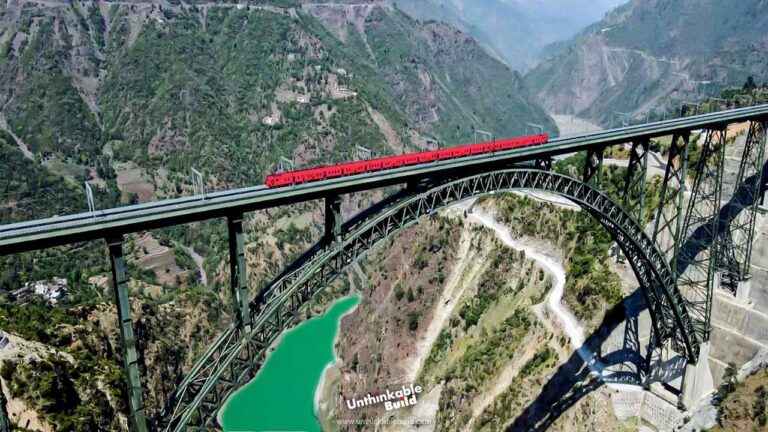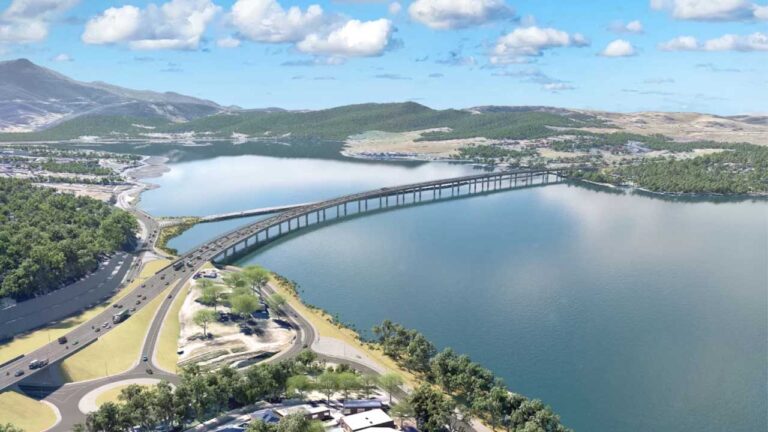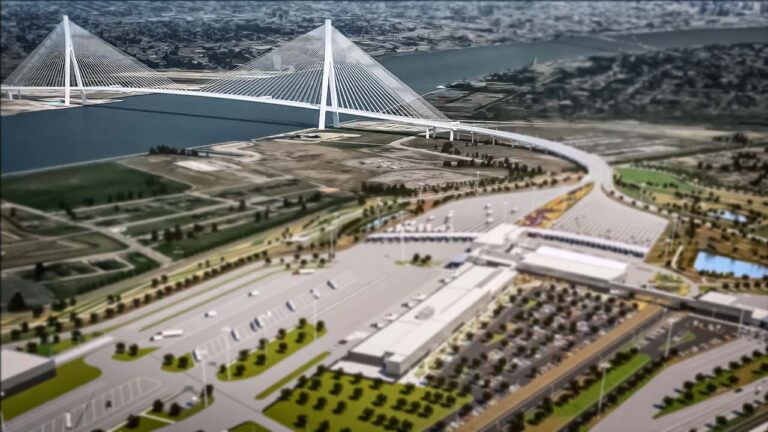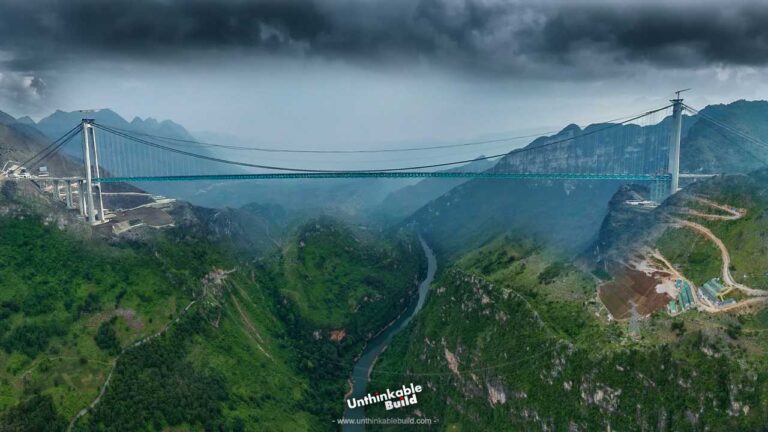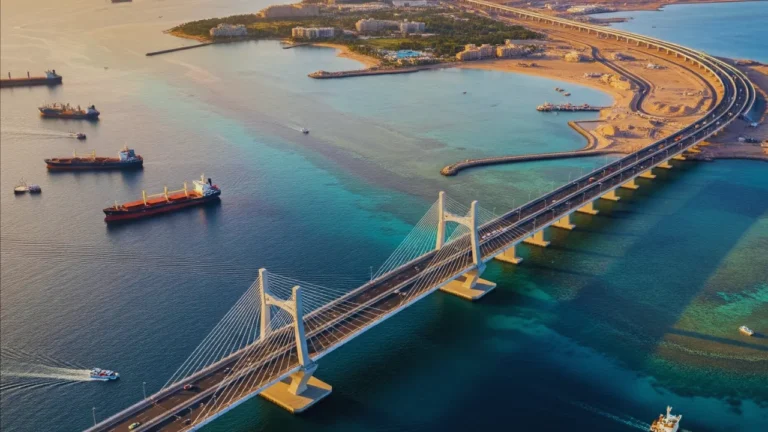Mumbai Trans Harbour Link: India’s Longest Sea Bridge
India is a land of ancient traditions and modern ambitions that has become one of the rapidly expanding economies in the world. In recent decades, this vibrant nation has embarked on a journey of transformation, undertaking ambitious mega projects that are shaping its future and captivating the world.
In the heart of India’s financial capital lies a labyrinth of chaos, an intricate web woven by the ceaseless movement of people and vehicles – Mumbai’s traffic. Here, amidst the harshness of horns deafening and engines roaring, a daily struggle unfolds, encapsulating the essence of urban life.
As dawn breaks over the horizon, the city awakens to the rhythmic dance of cars, buses, and auto-rickshaws, each vying for their place in the spotlight of the asphalt jungle.
From the narrow lanes of South Mumbai to the sprawling suburbs of the north, the struggle is universal. Here, every commuter becomes a protagonist in their own tale of endurance, navigating through the maze of potholed roads and reckless drivers with unwavering determination.
Yet, across the shimmering waters of the Thane Creek lies a different story – Navi Mumbai. Conceived as a planned satellite city to alleviate the burden on its older sibling, Navi Mumbai stands as a testament to urban planning and foresight. Here, wide boulevards and green spaces offer respite from the hustle and bustle of city life, while meticulously planned sectors ensure a seamless flow of traffic and commerce.
According to historical records from the 1960s, the Indian government has always been looking for ways to connect Mumbai and the neighboring city of Navi Mumbai.
As a result of such efforts and planning, the concept of constructing a bridge which would be the longest sea bridge in India and world’s 12th longest sea bridge was proposed not long ago. It is the Mumbai Trans Harbor Link (MTHL), known as India’s Bridge of Dreams.
Also Read: The Mumbai–Ahmedabad High-Speed Rail Corridor
In Mumbai, a monumental engineering marvel rises above the waves, connecting dreams and destinies across the blue waters of the Arabian Sea. Welcome to the Mumbai Trans Harbor Link, an architectural triumph that stands as a testament to human ingenuity and collaboration.
For decades, the bustling metropolis of Mumbai grappled with congestion and gridlock, as millions of commuters navigated through its labyrinthine streets. But amidst the chaos, a vision emerged, a vision to connect the twin cities of Mumbai and Navi Mumbai like never before.
The journey of the Mumbai Trans Harbour Link began in December 2016, marking the dawn of a new era in urban connectivity. Organized by Indian multinational Larsen & Toubro and Tata Projects the construction commenced in April 2018, setting the stage for an unparalleled feat of engineering.
It is a monumental task, spanning over 21.8 kilometers of treacherous waters, including a 16.5 kilometers sea bridge and 5.5 kilometers of viaduct on land on either end of the bridge.
Located in the Mumbai Metropolitan Region and begins in Sewri area of south Mumbai, the Mumbai Trans Harbor Link isn’t just a bridge, but a lifeline for millions of commuters, a symbol of progress and prosperity.
The project was financed 85% by Japan International Cooperation Agency, which released its first tranche of $1.22 billion in March 2017. The bridge features an intelligence transport system and other amenities required for a marine bridge.
A major concern during the construction of the bridge was its impact on the environment, particularly mangroves and bird habitats. This is the reason why some important changes were made in the project after all the arrangements were completed to minimize the impact on the natural environment.
The construction of this mega project unfolded in three distinct phases, each marked by feats of engineering brilliance. To bring this marvel to life, an astonishing amount of materials was requisitioned. 165,000 tons of reinforcement steel, 96,250 tons of structural steel, and a staggering 830,000 cubic meters of concrete were meticulously employed.
A pioneering feature of Mumbai Trans Harbor Link is its utilization of orthotropic decks, a first of its kind in India. These innovative steel decks grant the bridge unprecedented span lengths, surpassing the limits of traditional girders. A remarkable total of 70 orthotropic decks, weighing approximately 96,250 tons collectively, were integrated into the bridge’s design.
The steel spans, some weighing up to 2,600 tons, stretch over 4.7 kilometers of the bridge’s expanse, distinguishing it as the highest point of the Mumbai Trans Harbor Link. Notably, a 180-meter steel span, the lengthiest in India, serves as a crowning achievement of this architectural marvel. Conversely, concrete spans, each spanning 60 meters and weighing up to 130 tons, complete the remainder of the structure.
Strategically, steel spans were employed in sections spanning 4.7 kilometers to obviate the need for pillars, which could impede maritime traffic in the area. Notably, the Mumbai Metropolitan Region Development Authority’s foresight in this decision is evident, ensuring unhindered navigation for vessels.
Remarkably, a mere 3% of the bridge’s structure was erected onsite, primarily comprising foundational elements and the pouring of cement over metal girders. The bulk of the construction was prefabricated, meticulously crafted in distant locales such as Japan, Myanmar, Taiwan, and Vietnam before being transported to the construction site for assembly.
In essence, this bridge stands not only as a testament to human ingenuity but as a symbol of collaboration on a global scale, uniting disparate parts of the world in the pursuit of a singular vision.
After years of relentless effort, the Mumbai Trans Harbor Link was inaugurated on January 12, 2024, a beacon of hope and unity for the people of Mumbai and Navi Mumbai. But the journey was far from over.
Also Read: Navi Mumbai Airport: A Game-Changer for India
The Mumbai Metropolitan Region Development Authority has installed noise and vision barriers on a 6 km section of the Mumbai Trans Harbor Link (MTHL). The vision barriers are intended to block the view of the Bhabha Atomic Research Centre from the Mumbai Trans Harbor Link (MTHL), while the noise barriers are intended to protect the movement of flamingos and migratory birds at the Sewri mudflats. The MMRDA also stated that it would declare nearly 2 km of the Mumbai Trans Harbor Link (MTHL) on the Sewri side as a “silent zone”, as well as near schools and other sensitive areas on the Navi Mumbai side of the Mumbai Trans Harbor Link (MTHL). Construction equipment used during the project were fitted with silencers to reduce the potential impact of noise on migratory birds such as flamingos. The project utilized reverse circulation drilling methodology which helps reduce noise levels and helps speed up construction in marine areas.
Furthermore, a 5.6 km long temporary access bridge had also been built to transport equipment and workers for the construction of the Mumbai Trans Harbor Link (MTHL). In November 2021, the MMRDA announced that it had decided against demolishing the bridge and would convert it into a bird-watching platform to view flamingos and other birds. The agency noted that the decision would also save the cost of having to demolish the bridge.
As an access-controlled road, to efficiently manage and regulate traffic movement across the Mumbai Trans Harbor Link (MTHL), it has the Advanced Traffic Management System, which is a centralized system that allows operators to monitor and manage traffic, incidents and emergency responses in real-time. Along with this, the Intelligent Transportation Management System is also present to systematically work with the ATMS together. This has given the bridge an international recognition for having advanced systems to manage traffic.
Like the Bandra-Worli Sea Link, due to safety considerations, two-wheelers and three-wheelers are prohibited from entering the Mumbai Trans Harbor Link, along with animal-drawn carriages and slow-moving vehicles. A ban on bicycles is also in effect, though the lack of signage will make the ruling ineffective. The traffic division of Mumbai Police has mandated a speed limit of 100 km/h to prevent fatalities. Furthermore, stopping on the bridge is prohibited, with the exception of emergencies, breakdowns, or when pulled over by law enforcement.
With its state-of-the-art intelligence transport system and meticulous attention to environmental preservation, the bridge stands as a testament to sustainable development in the 21st century. From its inception to its completion, the Mumbai Trans Harbor Link embodies the spirit of innovation and collaboration, bridging not just physical distances, but also the aspirations of a nation.
Such modern infrastructure projects, which provide facilities to the public as well as save time and fuel during travel and transportation of goods, guarantee the rapid growth of the economy of developing countries. Subscribe to the channel and stay connected with us so that in the future we will continue to tell you the details and features of many such amazing mega projects of the world.

